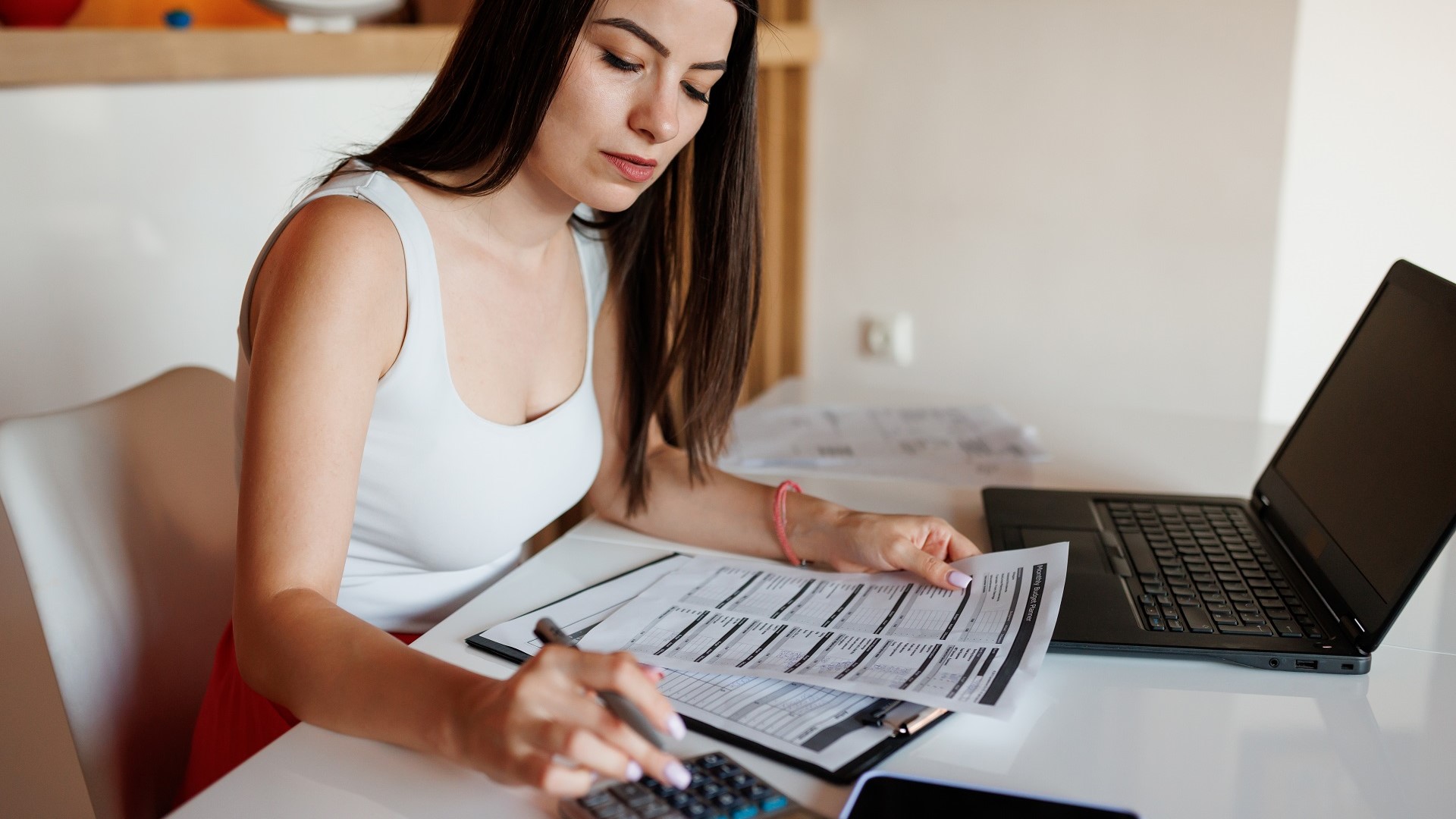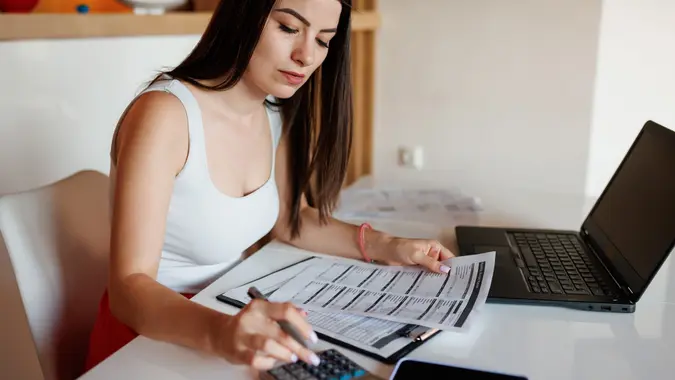

Tanja Ristic / iStock.com
You entered the new year with a big resolution: paying down your debt. But as you look at that pile of paper bills and email notifications of payments due, you wonder just how to start making a dent in that debt.
Student Loan Forgiveness: Will You Qualify for $0 Payments Under Biden’s New Plan?
How To: Protect Your Financial Future With Gold and Silver
See: Here’s How Much Americans Have in Their Savings Accounts in 2023
You didn’t get into debt overnight, and you won’t become debt-free overnight, either. Getting there, however, requires a two-pronged plan: prioritizing how to pay off what you owe and not creating more debt, financial experts said.
“Making a list of all of your debts and highlighting their interest rates is the first step towards putting them in order of priority,” said Fred Winchar, a co-founder, president and CEO of financial broker MaxCash. “Prioritize debts with late fees or penalties because they can mount up rapidly.”
“The first step in getting out of debt is to stop taking out more debt,” said Jay Zigmont, Ph.D., CFP and founder of Childfree Wealth. “That means not taking out any new debt and locking your credit cards so that you can’t use them.”
Let’s take a deeper dive into how you could prioritize your debts.
The Necessities
Sean Fox is the president of debt solutions at Achieve, a California-based digital personal finance company. He advised starting with the must-pays every month: shelter, food and utilities.
Take Our Poll: What Are Your Financial Priorities in 2023?
“That includes paying the minimum on any secured debts, like a house or car,” he said. “Between the two, pay the housing expense first. If you miss payments there, you risk losing your home and a place to live.”
If you’re struggling to pay your housing costs, Fox suggested contacting your mortgage servicer, who could offer more time to pay. Also, many states, counties and cities have rental assistance programs.
“Similarly, if you are struggling to make a payment on a vehicle loan, contact your servicer immediately,” Fox said. “They may be open to structuring a different payment plan.”
Student Loans
This should be the next debt to attack, according to Fox.
“Pay — or save to pay — any student loan debt,” he said. “While these payments are on pause, there is no guarantee of full forgiveness. And since, even in a bankruptcy, student loan debt cannot be discharged, it is prudent to pay the debt you’ve incurred, or at least save on a regular basis to be able to pay it if and when it comes due. Worst case? Your loans are forgiven and you have increased your savings.”
Credit Cards and Other Loans
“You should concentrate on paying off high-interest debt first, such as credit card debt, while attempting to minimize debt,” Winchar said. “This is because paying off credit card debt first might help you save a large sum of interest costs over time. Credit card interest rates are often much higher than those on vehicle loans or other loans.
“Additionally, because credit card balances are often smaller than those on larger loans, they can be paid off quickly. To prevent late fees and penalties, it’s crucial to pay off all bills — at least the minimum amount due.”
Debt Payment Strategies
There are two common methods by which people pay off debts: the snowball and the avalanche.
“In the snowball method, you pay the monthly minimum on all of your debts and put any extra money towards the smallest debt. It does not matter what type of debt it is. The one with the smallest balance gets addressed first,” Zigmont said. “Once you pay off that debt, you move on to the next one, but you have one less monthly payment to make — starting the snowball. The bonus of the snowball method is that you get quick wins, and it tends to help people stick to paying off their debt.
“In the avalanche method, you pay off the debt with the highest interest rate first. Chances are your credit cards will have the highest interest, followed by personal loans, student loans and car loans. The avalanche is mathematically correct, but it may be a while before you pay off your highest-interest debt.”
Get Started
The important thing is paying off that first balance due and feeling that sense of achievement, said Juliann Gumulak Smith, the founder of the Investment Academy for Women.
“So many people get stuck with the first step in paying off debt,” she said. “They get wrapped up in analysis paralysis. Which debt should I pay off first? What is the interest rate on this loan? How much do I owe on this credit card? What ends up happening is that you don’t do anything.
“Let’s keep it simple. Start with the smallest debt you have and pay it off. Then the next and the next. This creates momentum. Think way back to your high school physics class. An object in motion stays in motion. So, get paying off your debt in motion, keep it simple, and begin. To begin is the hardest part.”
More From GOBankingRates
Source link
